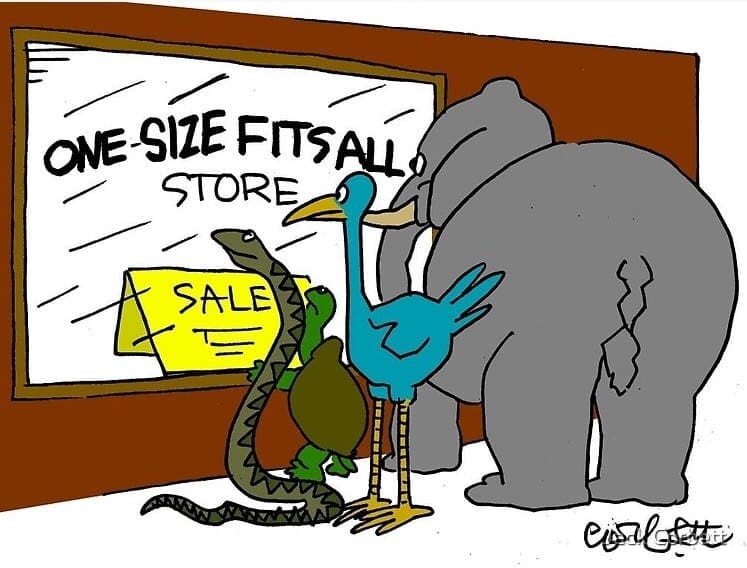यूडीएल चेकलिस्ट से विशिष्टताओं को जोड़ना
एक लक्ष्य बनाएं और सुनिश्चित करें कि सभी सामग्री लक्ष्य का समर्थन करती है।
The activity as outlined is designed to support the goal. You can assess how successful you were in achieving your goal by adding in some check-ins. For example: Repeat theater vocabulary throughout and by the middle of the activity, ask students to fill in the blank instead of giving them the word. “We need someone else to add onto our frozen picture, our ___.” At the top of the activity, you can introduce an “actor tools” checklist: voice, body, imagination. Afterward, ask students: “Did we use our voices? If so, sing me an ‘ahhh.’ Did we use our bodies? If so, strike a pose. Did we use our imaginations? If so, give me a thumbs up.”
छात्रों को स्व-विनियमन, विकल्प बनाने और उनकी रुचियों को शामिल करने के अवसर प्रदान करें।
Prior to the activity, you could add a group brainstorm of options: “What are your favorite things in a park?” Then throughout the activity, students have choices in how they want to participate. They can choose when and what they add to the tableau; they can help direct the tableau; or they can add sounds from the audience. You can lead multiple rounds to let students choose which environments to explore next.
कई प्रवेश बिंदु बनाएं ताकि सभी छात्र समान रूप से पहुंच सकें और आनंद ले सकें।
For students who are less verbal or non-verbal, you can eliminate the verbal prompt, “I am a ___,” and put the emphasis on making a clear pose. If there are students who are verbal in the class, this can then become a fun guessing game. You can also have students participate as “director” to help make the tableau clearer.
पहले करें, फिर चिंतन करें। इसे अंत तक सहेजने के बजाय पूरे पाठ में प्रतिबिंबित करें।
Students can reflect in various ways on their experience during the activity. During a timeout, between rounds, or after the activity, you can prompt students to share how they’re feeling, inviting them to respond verbally, with a still pose, a dance move, a drawing, etc. Or you might ask students to show with their bodies poses that they liked, that either they made or someone else in the class made.
विभिन्न तौर-तरीकों का उपयोग करके जानकारी प्रस्तुत और विकसित करके कई सीखने की शैलियों का समर्थन करें।
- दृश्य: आप विद्यार्थियों से पार्क का अपना संस्करण बनाकर गतिविधि शुरू कर सकते हैं। या आप एक समूह भित्ति चित्र बना सकते हैं जहां प्रत्येक छात्र पार्क का एक हिस्सा तब तक खींचता है जब तक कि एक बड़ा समूह पार्क न हो। यदि कोई छात्र फंस जाता है तो आप पार्क में चीजों के दृश्यों के साथ तैयार होकर आ सकते हैं।
- बोली जाने वाली/मौखिक व्याख्या और प्रतिक्रियाएं: ऊपर बताए अनुसार गतिविधि की व्याख्या करें। साइड-कोच और भर में सुनाना।
- लिखित/पाठ आधारित सामग्री: यदि आप समय से पहले समूह विचार-मंथन करते हैं, तो आप पार्क में पाई जाने वाली चीज़ों के लिए विचारों को लिख सकते हैं और लिख सकते हैं।
- प्रौद्योगिकी: यदि उपलब्ध हो, तो आप कंप्यूटर या टैबलेट का उपयोग विज़ुअल्स को खींचने के लिए कर सकते हैं ताकि छात्रों द्वारा उनके विचार मंथन, पोज़ और/या झांकी में उत्पन्न विचारों के साथ जोड़ा जा सके। आप पार्क में "जीवन में एक दिन" का वीडियो दिखाकर भी गतिविधि शुरू कर सकते हैं।
- छात्रों के लिए अपने शरीर का उपयोग करने और स्थानांतरित करने के अवसर: यह पहले से ही गतिविधि में बेक किया हुआ है। आप झांकी का निर्माण आंदोलन को शामिल करने या पार्क डांस मूव बनाने के लिए कर सकते हैं, जिसका समापन पार्क डांस पार्टी में हो सकता है।
- छात्रों के लिए स्पर्शनीय और/या संवेदी अनुभवों में संलग्न होने के अवसर: You can bring in items from a park (e.g., tactile objects like bark, grass, and stones; or essential oils with scents like pine and lavender). Introduce these items as you are setting the scene of the park.
 प्रयत्न
प्रयत्न प्रयत्न
प्रयत्न याद कीजिए
याद कीजिए

